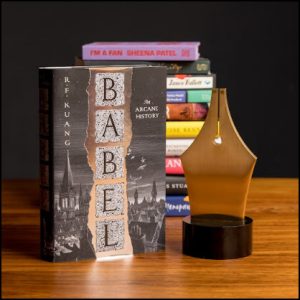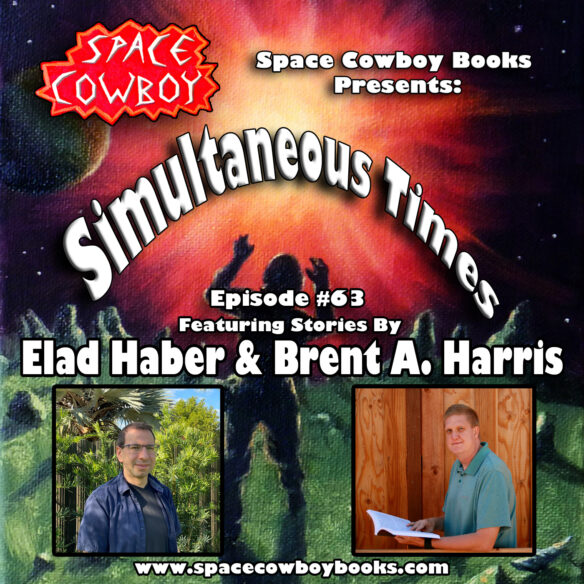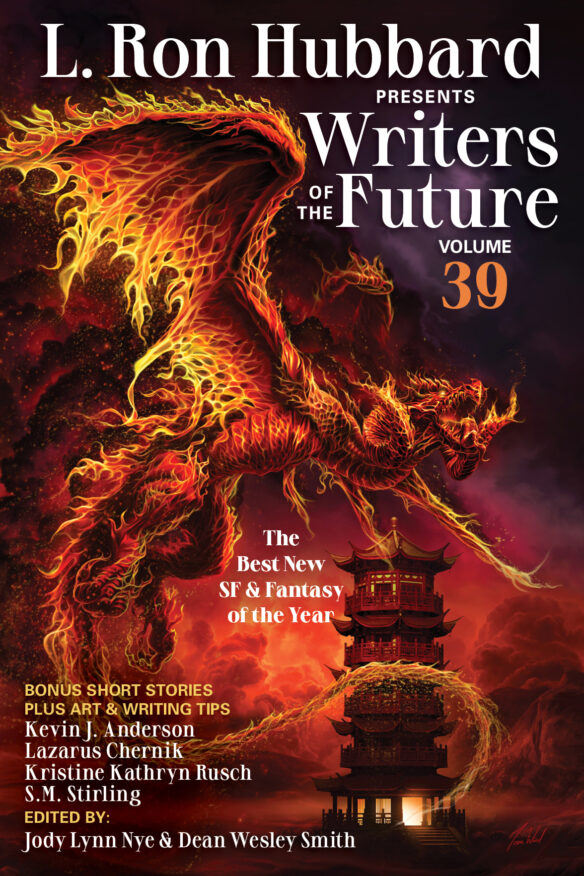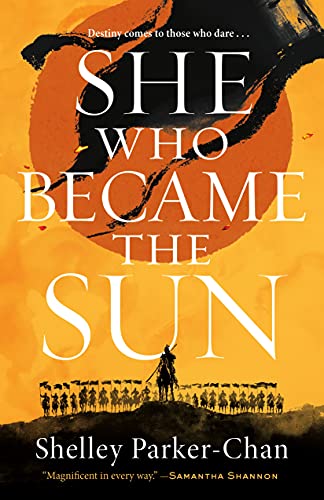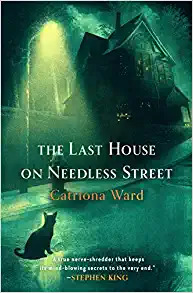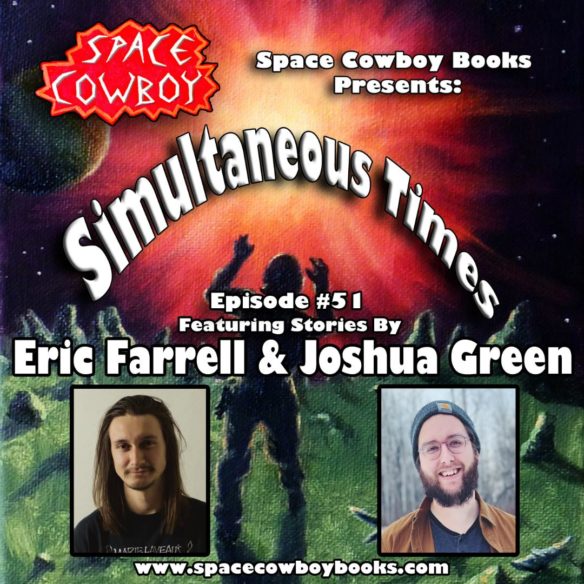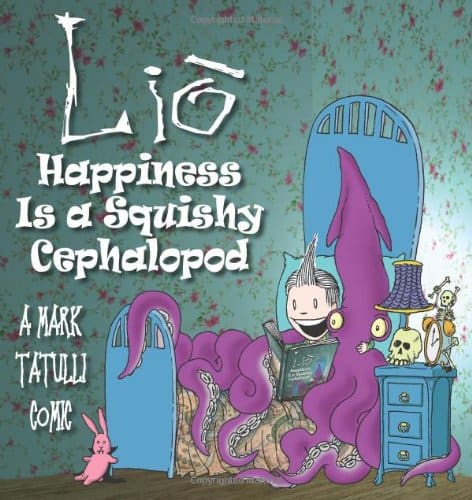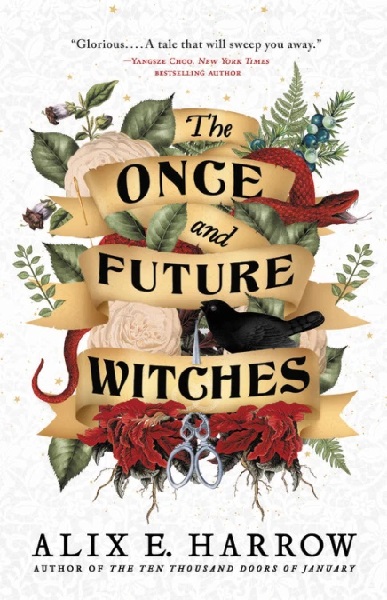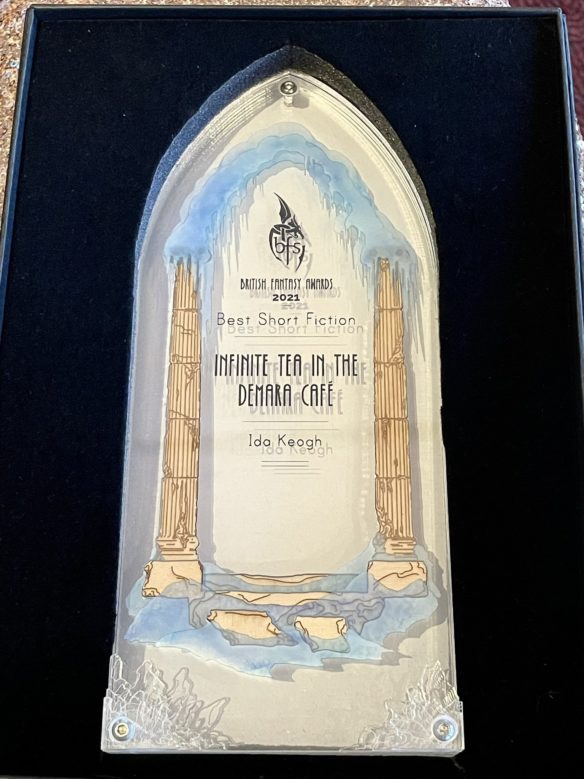(1) BRITISH FANTASY AWARDS TAKING NOMINATIONS. It’s time for eligible voters to nominate for the British Fantasy Awards 2024. Full details at the link. Voting will remain open until Saturday, June 29.
You can vote for the BFAs if you are any of the following:
– A member of the British Fantasy Society
– An attendee at FantasyCon 2023 (Birmingham)
– A ticket-holder for FantasyCon 2024 (Chester)
For each category, you may vote for up to three titles. There is no requirement to complete all three fields for each category, or to vote for every category. …
A crowdsourced list of suggestions has been created here: http://tinyurl.com/suggestionlist2024. You may vote for titles not on the suggestions list – this is just to help you generate ideas if you need some guidance….
…The four titles or names with the highest number of recommendations will make the shortlist of nominations. In case of a tie, the title with the most recommendations in space “1” will go through – so please rank your votes in order of preference.
(2) WORLDCON 2026 SITE SELECTION OPENS. Glasgow 2024 announced that WSFS Site Selection for the 2026 Worldcon is open. Complete directions for voting are at the link.
Los Angeles (Anaheim) in 2026 is the sole bidder on the ballot. Their website can be found here. Write-in bids are also allowed, however, to be selected they must meet the requirements in the WSFS Constitution and file the necessary documents with the administering Worldcon.
Glasgow 2024 WSFS Members who wish to vote in Site Selection need to purchase an Advance WSFS Membership in the 2026 Worldcon, at a cost of £45.00 (GBP). All members who pay this fee will automatically become WSFS Members of the 2026 Worldcon, regardless of who they vote for (or indeed if they vote at all). All Advance WSFS Membership fees received by Glasgow for the 2026 Worldcon will be passed on to the successful candidate.
There are three ways for you to vote in Site Selection:
- We have partnered with Election Buddy, a leading provider of secure voting solutions, to enable easy online voting for Site Selection this year. Full information on how to vote online is provided below. This is the quickest and simplest way to pay your fee and submit your site selection ballot.
- Attending Members can vote in person at Glasgow 2024, until the Site Selection desk closes at Noon on Saturday, 10th August.
- You can also submit a printed ballot by postal mail. If you wish to use this option, please contact us at [email protected]. All postal ballots must reach us by Thursday, 1st August.
(3) WOMEN’S PRIZE FOR FICTION. The winner of the 29th Women’s Prize For Fiction is Brotherless Night by V. V. Ganeshananthan, a non-genre novel.
The only shortlisted genre work was The Blue, Beautiful World by Karen Lord (Gollancz).
The Prize is awarded annually to the author of the best full-length novel of the year written in English and published in the UK. The winner receives £30,000, and the “Bessie”, a bronze statuette created by the artist Grizel Niven.
(4) NEW TOLKIEN MEMORIAL. With an assist from Neil Gaiman and Roz Kaveney, “JRR Tolkien memorial unveiled at Pembroke College” reports BBC News.
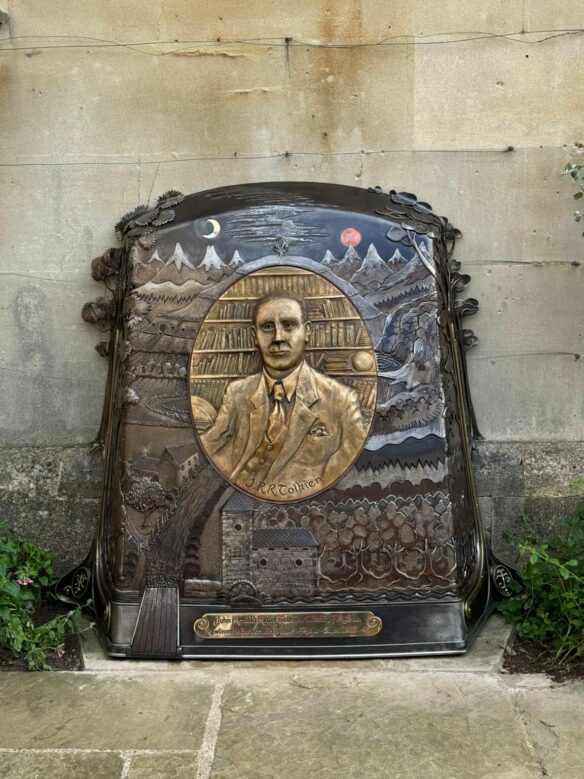
A memorial to The Lord of the Rings author JRR Tolkien has been unveiled at the University of Oxford college where he used to teach.
The bronze sculpture, created by sculptor Tim Tolkien, the writer’s grand-nephew, was revealed at Pembroke College.
Neil Gaiman, who served as master of ceremonies at the event, told the BBC that Tolkien was a “towering figure” who “singlehandedly created an entire genre of literature”.
The college said Tolkien was “one of the college’s most esteemed fellows and a literary giant of the 20th Century”.
The memorial design depicts Tolkien as he looked during his time at Pembroke.
Its Junior and Middle Common Rooms each raised 10% of the funds. The Tolkien Society and the Tolkien Estate also contributed.
The author served as the Rawlinson and Bosworth Professor of Anglo-Saxon at the college from 1925 to 1945.
He also wrote The Hobbit, part of The Lord of the Rings, and critical works such as Beowulf: The Monsters and the Critics during his time there.
A special poem was read out at the unveiling by writer and Pembroke alumna Roz Kaveney.
Gaiman, author of The Sandman and Good Omens, said he had been a fan of Tolkien ever since he bought an “ancient green hardcover” of The Hobbit for a penny.
He said: “Even more exciting for me was finding in the school library The Fellowship of the Ring and The Two Towers.
“I read them over and over and when I got to the end of The Two Towers I’d go back to The Fellowship of the Ring.
“And when at the age of 12 I won the school English prize they said: ‘What do you want? We’ll get you a book.’ And I said: ‘Can I have The Return of the King? I want to find out how it ends.'”
He said hosting the event was “an honour that I’m not worthy of, and that’s fine because none of us are”.
He added: “Being in this place feels huge and strange and very appropriate. Walking the grounds that Tolkien walked, [feeling] just slightly disappointed that there are not enough trolls and elves here as well, but maybe they’ll turn up.”…
(5) WINDS OF CHANGE? Mark Roth-Whitworth opens a discussion of “Cultural changes in fandom”. First on the list:
…Thinking back over the decades I’ve been going to cons, in the last few years, things seem to have changed. For one, there are more writers, and fewer fans on panels….
(6) MALIK & SHAWL EVENT. Usman T. Malik will be in conversation with Nisi Shawl at Hugo house in Seattle next week. It will be a hybrid event. Free registration to see it online is available here.

(7) GENERATIONAL CHANGE IN CHINA. “Escaping the Censors’ Gaze: Lai Wen on Sci-Fi and the Need for Chinese Protest Literature Today” at Literary Hub.
Xinran: What excites you about the literary scene in China today?
Lai Wen: I think Chinese science fiction is particularly good. It’s something that often sucks in the fundamental social conflicts and contradictions of a given time and remodels them through these incredibly creative and vast fantasy worlds. The earliest Chinese science fiction novels weren’t all that great, to be frank, but they still told you a lot about Chinese society, our way of life, our fears and our hopes.
Lu Shi’e’s New China, published at the beginning of the twentieth century was one of the first examples of homegrown Chinese sci-fi/fantasy. The memory of the Opium Wars—the defeat by foreign powers and the vast numbers of the population who remained addicted to the drug—was still raw.
In his novel, one of the central characters is a genius doctor who invents medical techniques that can pull the population out of an opium-induced stupefaction and supercharge their minds. China then goes on to experience a period of intense rejuvenation, emerging as an economic and cultural superpower where peace and prosperity reign. The novel itself is somewhere between wish-fulfillment and prophecy, as many of the novels from that period were.
I think that the creative and original wave of science fiction coming out of China can be understood in the context of our history. Throughout the twentieth century, change was occurring at a frenetic, world-shattering pace. The final Manchu/Qing dynasty ended in 1911 and then power was dispersed amongst hundreds of local war lords jockeying for position; then Kuomintang was able to unite China under a modern nationalization program.
There was the Second World War, the civil war, Mao’s communists, the Great Leap Forward and the Cultural Revolution, until, eventually, the country was opened up under Deng Xiaoping. Today, China has emerged as a dominant global power.
So many Chinese people born in the last hundred years have lived through successive social systems and different economic models compressed into a handful of decades. Chinese science fiction reflects this. During the period of Communist dictatorship, the genre tended to be more sterile, reduced to the level of propaganda for the Party, but in the 1980s and 1990s science fiction went through something of a revival under Deng’s administration.
While censorship was still robust, science fiction and dystopic fantasy enabled cutting political and social commentaries to fly under the radar. Nineteen Eighty-Four made it past the censors, for instance, and many of the classics of Western science fiction were accessible to people during this time, along with Hollywood films such as E.T.
I don’t think it’s a coincidence that the most famous Chinese science-fiction writers lived through this period—writers such as Han Song and, most famously of all, Liu Cixin, whose most successful novel, The Three-Body Problem, has been made into a Netflix series….
(8) TODAY’S BIRTHDAY.
[Compiled by Cat Eldridge.]
Born June 13, 1893 — Dorothy Sayers. (Died 1957.) I’m going to talk about Dorothy Sayers tonight who though she wrote a handful of ghost stories is here because of mysteries. Oh, what mysteries they were.
Her first novel, Whose Body?, was published in 1923. Over the next thirteen years, she would write ten more novels featuring the ever so proper Lord Peter Wimsey who solved mysteries. In Strong Poison, we would be introduced to artist Harriet Vane who Wimsey would fall in love with in an properly upper-class manner. Harriet appears off and on in the future novels, resisting Lord Peter’s proposals of marriage until Gaudy Night six novels later.
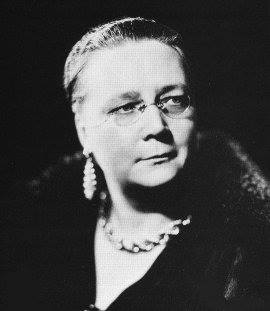
Yes, I read all ten of these novels in order some forty years back. I like them better than Agatha Christie novels on the whole as the social commentary here gives them a sharper edge and I think Sayers described her society better than Christie did. Now Christie was way more productive over a much longer period of time as Sayers stopped writing these mysteries, which includes short stories, by the later Thirties in favor of writing plays, mostly on religious themes which were performed in cathedrals and broadcast by the BBC.
So there’s eleven novels and the short story collection, Lord Peter Views the Body, which I’ve not read but now I see is on the usual suspects as a rather good deal of just a dollar, so I’ll grab a copy now. Done.
I’d like to speak about The Lord Peter Wimsey series starring Ian Carmichael of the early Seventies, it covered the first five novels. Carmichael said he was too old to play the part for the romantic relationship of the later novels, but it didn’t matter as the series was cancelled.
I thought it was a rather well-done series and I caught it recently on Britbox, one of those streaming services, and it has help up rather well fifty years on with the Suck Fairy concurring.
He did play Wimsey into the BBC radio series that covered all of the novels and ran at the same time. They are quite excellent and are available on Audible at a very reasonable price.
Finally she wrote, according to ISFDB, a handful of genre stories, four to be precise —“The Cyprian Cat”, “The Cave of Ali Baba”, “Bitter Almonds” and “The Leopard Lady”. Three seem to be fantasy and the fourth, “Bitter Almonds” I’ve no idea about. Anyone have knowledge of these?
(9) COMICS SECTION.
- Rhymes with Orange features a page turner.
- xkcd explains all those weird word math problems.
- Carpe Diem offers the correct explanation why one species became extinct.
(10) THE BOYS IS BACK IN TOWN. [Item by Daniel Dern.] Season 4 of The Boys, based on Garth Ennis’ comic book series, (all available in digital omnibus editions via Hoopla, etc.) starts up (on Prime) Thursday, June 14 with the first 3 episodes, the following 5 dropping weekly.
Reminder, the Prime spin-off series GEN V takes place between The Boys seasons 3 and 4.
If you haven’t seen Seasons 1-3 and GEN V, watch those first.
Like the comics, The Boys (and GEN V) contains lots of fairly explicit violence, cussing, sex, nudity, and drugs. And a bit of song and dance here and there, but not much.
Also returning, August 8: the 4th and final season of The Umbrella Academy.
(11) KGB PHOTOS. Ellen Datlow has posted photos from last night’s Fantastic Fiction at KGB readings with Grady Hendrix and Bracken McLeod.
(12) GINA CARANO SUIT PROCEEDING. The Hollywood Reporter updates readers: “Mandalorian Lawsuit: How Gina Carano, Disney Are Battling In Court”. “At a Wednesday hearing, a judge expressed skepticism that the Carano’s lawsuit should be tossed before discovery is allowed to take place.”
A federal judge has signaled that Gina Carano‘s lawsuit against Disney and Lucasfilm over her termination from The Mandalorian will be allowed to proceed as the court considers whether the First Amendment allows private companies to sever ties with employees who publicly clash with their values.
U.S. District Judge Sherilyn Peace Garnett on Wednesday pushed back on arguments from Disney lawyer Daniel Petrocelli, who argued that the lawsuit should be dismissed because the company has the “right not to associate with a high-profile performer on a high-profile show who’s imbuing” the Star Wars series with “views it disagrees with” that could turn fans away from the show.
Petrocelli urged the court to find in favor of Disney on its First Amendment defense on dismissal rather than at a later stage of litigation after discovery takes place in which it’s determined whether the case should be allowed to proceed to trial.
“I’m not convinced there are no disputed facts,” Judge Garnett responded. She pointed to allegations that Carano was terminated to deflect attention from Disney’s contentious business decisions at the time, including the company’s contract dispute with Scarlett Johansson and criticism of Florida’s Parental Rights in Education law, which led to the dissolution of its special tax district in the state….
(13) LATEST IN CAPTAIN FUTURE SERIES. Hugo, Locus, and Seiun award-winning author Allen Steele returns to the world of Edmond Hamilton’s classic SF pulp hero with Lost Apollo, a new Captain Future adventure,
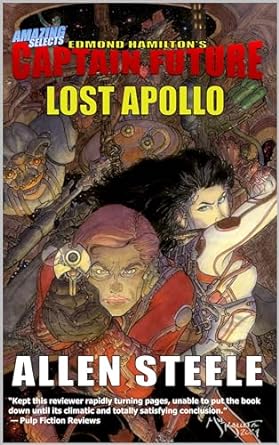
The first installment of a two-part story arc takes the cosmic defender and his uncanny crew on a quest across parallel worldlines to save not just our own universe, but countless others!
When an archaic spacecraft unexpectedly comes through a spacetime rift between Earth and the Moon, Curt Newton and the Futuremen intercept it and discover that it’s Apollo 20, a NASA lunar mission from 1973. Yet history doesn’t record there being any further Apollo missions after Apollo 17 in 1972, which can only mean this craft and its crew must have come from a parallel universe … but how, and why?
To discover the answers, Newton enlists the aid of an old foe, a renegade Martian physicist who has unlocked the secret to multiverse travel. Together with the Apollo astronauts, the adventurers lead a military expedition back to the worldline the wayward spacecraft came from, only to discover an unexpected menace awaiting them, a force that threatens Earth … not just one, but many.
Allen Steele’s Captain Future series has been acclaimed by science fiction fans and pulp enthusiasts alike as the blazing return of a classic SF champion. The debut novel, Avengers of the Moon (Tor, 2017) was nominated for Japan’s Seiun Award for Best Foreign Translation. Steele is also the author of an unrelated 1995 novella, “The Death of Captain Future,” which received the Hugo, Locus, and Seiun Awards and was a finalist for the Nebula Award.
Lost Apollo is his sixth Captain Future adventure and his fifth to be published by Amazing Selects.
(14) NANO NEWS. The New Yorker looks at the question “How Will Nanomachines Change the World?”
…In the best case, Santos said, the advent of molecular machines will be less like the invention of an individual tool and more like the creation of a new toolbox. “We have to decide which tool works best for each job,” she told me. Nanomachines bring to mind other innovations for which scientists have found new applications over time. After lasers were invented, in 1960, the military used them to improve guidance systems for smart bombs; now they are used for eye surgery, high-speed Internet, and tattoo removal. Of course, for every technology like the laser, there are many others that never live up to their promise. Directing the right number of molecular machines to the right places, so that they do exactly what they’re made for and nothing more, is much easier in a petri dish than a living body.
Some machines could have untoward interactions with the immune system; others may be harmful to mammalian cells. It will probably be many years before the technologies are tested in humans. “There’s a huge leap between showing something works in a lab and proving it works in people,” Mihail Roco, a senior adviser at the National Science Foundation, who helped create the National Nanotechnology Initiative, told me. “These nanomachines could be a new treatment paradigm, but the human body is enormously complex. Many things we thought would work turned out to be ineffective or toxic.” Still, he went on, “Even if you don’t get exactly what you hoped for, you often learn something useful. You advance knowledge that, down the line, could benefit humanity.”
(15) 2024 NEBULA CEREMONY. The video of the 59th Annual Nebula Awards ceremony is now available on YouTube.
The 59th Annual Nebula Awards took place in Pasadena, California on June 8th, 2024. Hosted by Toastmaster, Sarah Gailey, the evening brought with it a toast to service, remembrance for those we lost in the publishing field, celebration of our finalists and winners of the evening and the induction of the 40th SFWA Grand Master, Susan Mary Cooper.
[Thanks to John King Tarpinian, Chris Barkley, Ellen Datlow, Mark Roth-Whitworth, Anne Marble, Bill, Daniel Dern, Andrew (not Werdna), Cat Eldridge, SF Concatenation’s Jonathan Cowie, Steven French, Teddy Harvia, Kathy Sullivan, Mike Kennedy, and Andrew Porter for some of these stories. Title credit belongs to File 770 contributing editor of the day Andrew (not Werdna).]



